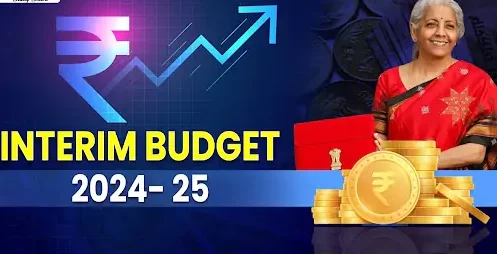
Union Budget 2024-25 : Infrastructure Allocation and Economic Corridors in Focus
NEW DELHI : The Interim Budget effectively lays the groundwork for the forthcoming general budget post the Lok Sabha elections. Finance Minister, in her short speech, identified with the cause of a vote on account, the focus has been on the continued thrust on visibility outcomes, which are mostly infrastructure in nature.
During her budget address, the Finance Minister highlighted the key sectors prioritised, notably emphasising a substantial 11.11 percent boost in infrastructure expenditure for the upcoming year, amounting to ₹11,11,111 crore, which constitutes 3.4 percent of the GDP.
However, this marks a notable contrast from the previous year’s 34 percent surge in infrastructure spending. The government’s decision to limit the increase to 11.11 percent may be aimed at aligning with the target of containing the fiscal deficit within the 4.5 percent threshold by the fiscal year 2025-26. This is also reflected in the lower budget allocation for the FAME scheme and SMART cities. It could also be argued that there is a revisit to these schemes, and the government is planning to relaunch them.
Three major economic railway corridor programs were unveiled, comprising energy, mineral , and cement corridors, port connectivity corridors, and high traffic density corridors.
These projects fall under the umbrella of the PM Gati Shakti initiative, aimed at facilitating multi-modal connectivity. A substantial allocation of ₹2.55 lakh crore has been earmarked as capital expenditure for the railway ministry, representing a modest 6.1% increase compared to the previous budget (₹2.4 lakh crore).
The projects under this initiative will involve upgrading track infrastructure through the doubling of existing routes and the creation of alternative routes to alleviate congestion. It aligns with the PM’s vision of the railway as the lifeline of the country and the imminent realisation of the full electrification of the railway network in India.
The challenge here is the timely completion of these corridors, learning from the experience of freight corridor development and then integrating them with regional and local development plans.
The primary objective of these corridors, as outlined by the finance minister, is to enhance logistics efficiency and reduce costs. Discussions surrounding these corridors have been ongoing for several months, reflecting their inclusion in the long-term plans outlined in the PM Gati Shakti Master Plans.
However, their successful implementation necessitates a thorough assessment of each sector’s growth potential to ensure viability and sustainability in the coming decades.
The energy, mineral, and cement transport corridors are designed to facilitate the smooth movement of coal, iron ore, bauxite, and cement. The cement corridor, in particular, will link cement factories, clinker, and fly ash manufacturing units to ensure the seamless transportation of these products.
Various infrastructure projects are expected to drive immediate demand for energy and cement. However, amidst growing concerns over pollution, climate change debate and India’s commitment towards net zero emissions, there is a pressing need to reevaluate the long-term demand of energy, cement, coal, etc.
Although the corridors hold promise for boosting GDP growth and facilitating smooth freight movement, it ultimately depends upon the industrial and trade growth in India and the development of industrial corridors and the feeder network.
Port connectivity corridors should encompass a holistic development plan, including ramping up cargo handling and constructing world-class infrastructure to ensure seamless freight movement. Attracting investments along the corridors is crucial for the optimistic growth projections to be realised.
Therefore, to get the ball rolling, it requires active involvement from private players, keeping in mind the economic growth in the forthcoming years. There is a need to incentivize the private sector to invest in and engage with the upcoming wave of infrastructure development.
The FM was exuberant, mentioning the UDAN scheme and the fleet of new aircraft arriving in India. The UDAN scheme has faced challenges in the past and it depends on how these routes are auctioned.
The increasing disposable income of the middle class has raised the air ridership to 180 million in 2023. This may well augment the 149 airport development discourse. In this context, the tourism and pilgrimage centres development fund to enhance tourism may boost the state economies. This scheme is well within the trends of utilisation of funds given to the states by the Centre.
There is an increase in the allocation in PM Awaz Yojna, announcement in the housing for the middle class in cities, conversion of 40,000 bogies to the vande bharat comfort levels, mention of the augmentation of e-bus in public transport, increased allocation of metro rail and Namo Bharat, etc.
The budget defines GDP as Governance, Development and Performance. If this is an index, the focus shall be on the effective, efficient deliveries and implementation of the announcements and prevent cost overruns due to delays.
There could be more on the BJP/ NDA manifesto and if they are reelected, the vote on account gives them assurance and guidance for a full budget without losing the guidance set by ‘Sweet Spot’ the government enjoys now.
